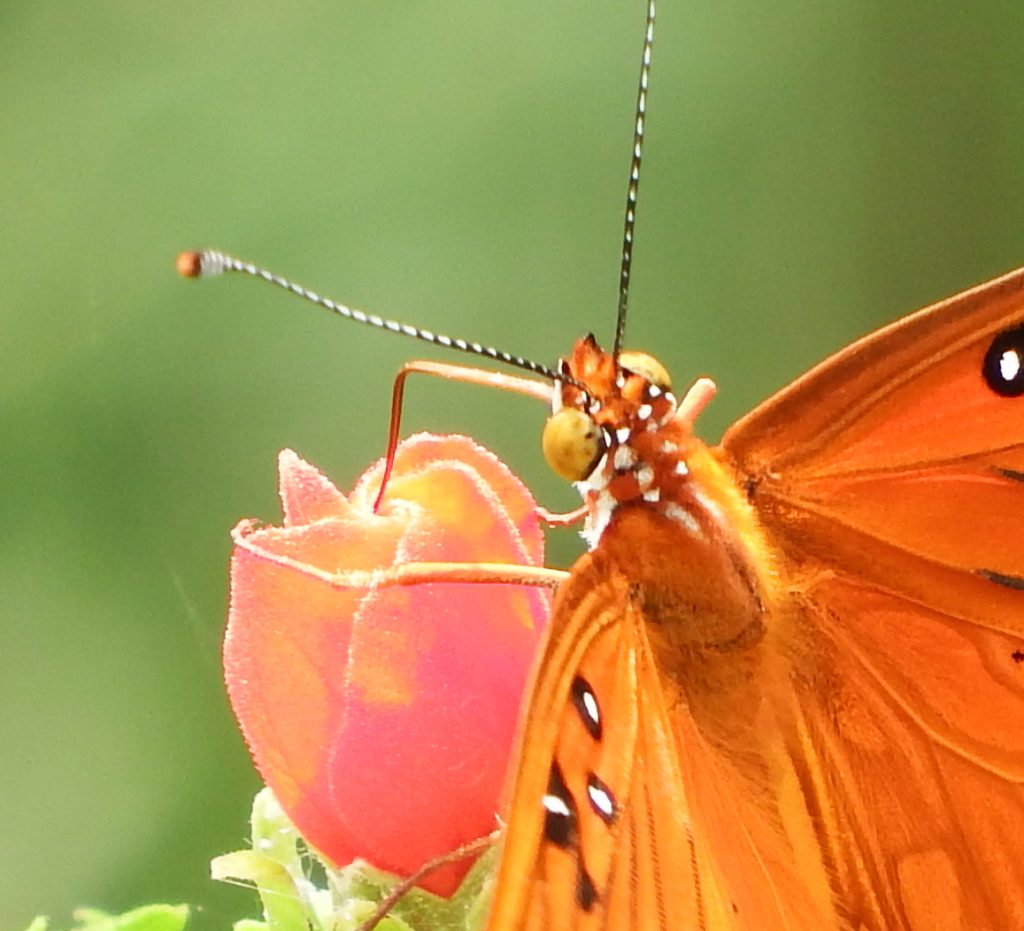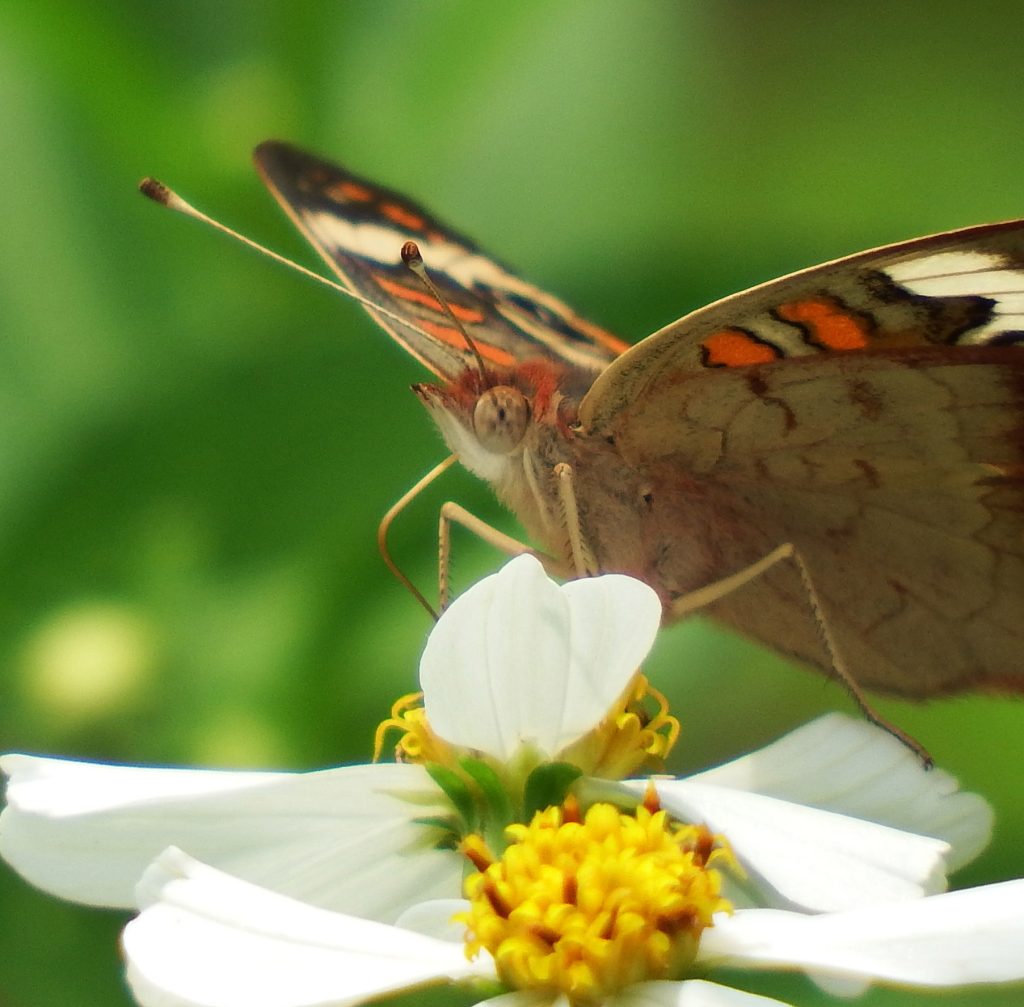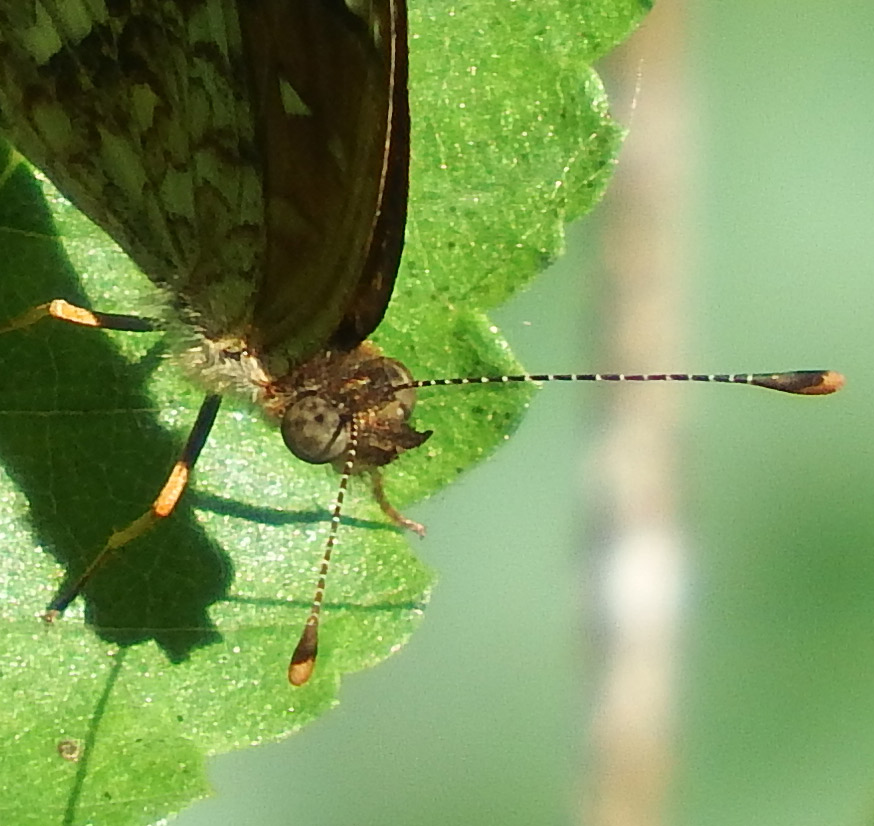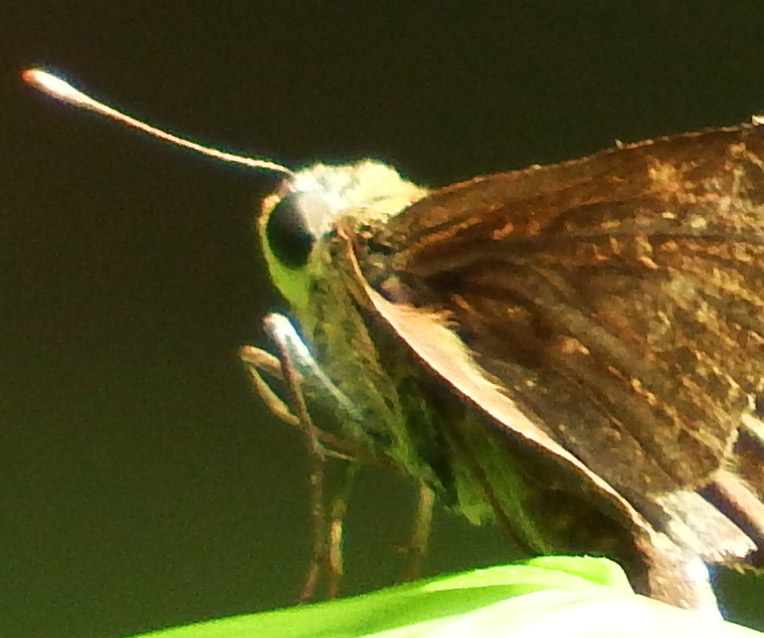Butterfly Eyes
 When you take a really close look at butterflies, there’s a lot more going on than gossamer wings toting a straw from flower to flower. For example, what’s up with those eyes?
When you take a really close look at butterflies, there’s a lot more going on than gossamer wings toting a straw from flower to flower. For example, what’s up with those eyes?
Each of our eyes has a single lens and both rods and cones. Rods allow us to perceive light and dark. Cones are specialized photo-receptors each tuned to one of three wavelengths corresponding to the colors red, green and blue. In combination, our cone cells allow us to see about seven million different colors. The placement of our eyes gives us about 12o degrees of vision, but most of that is peripheral vision which isn’t very acute.
 Butterflies have compound eyes. Rather than our one big eye, they have up to 17,000 mini eyes each of which has its own lens, a single rod, and up to three cones. Where we have cones (photo-receptors) for three colors, butterflies have photo-receptors for up to nine colors, one of which is ultra-violet. This is a spectrum the human eye cannot detect. We have to shine a black light on something to perceive variations in the ultra-violet spectrum. In butterflies, this channel is always on.
Butterflies have compound eyes. Rather than our one big eye, they have up to 17,000 mini eyes each of which has its own lens, a single rod, and up to three cones. Where we have cones (photo-receptors) for three colors, butterflies have photo-receptors for up to nine colors, one of which is ultra-violet. This is a spectrum the human eye cannot detect. We have to shine a black light on something to perceive variations in the ultra-violet spectrum. In butterflies, this channel is always on.
That ultra-violet perception is very important for butterflies because it allows them to see the ultra-violet patterning on flowers. When we see a flower, we might notice the color of the petals and the contrasting center, but when butterflies see that same flower, they might also see a big bullseye around that center and lines leading them down the throat of a deep flower. They might see sparkles where the pollen is. All of these are signals the flowers use to tell the bees (they can see ultra-violet, too), butterflies and other pollinators where that pollen is.
I am still trying to capture images of flowers in the UV spectrum (unsuccessfully so far), but I would like to send you to the website of Bjorn Rorslett, a Norwegian photographer who is spectacular at it. I can’t seem to link to a specific page, so in the index on the left, click on “UV flowers.”

Because of how enormous butterfly eyes are, they have almost 360 degrees of vision all of it similarly acute. Their vision is pretty clear, but no one can really tell whether the butterfly brain stitches those 17,000 individual impressions into a single cohesive field of vision or whether they perceive a mosaic.
Each of those mini eyes receives light from a very tiny segment of the visual field and the mini eyes are arranged so that light entering one cannot also enter another. As something moves across that field, the rods in each mini eye flick on and off giving a precise and rapid signal that something is there. When you are tasty, it’s best to be very alert.
I was most surprised at the lack of consistency in how butterflies perceive colors. It makes sense in a way because butterflies are very specialized creatures. Many of them can lay their eggs on only one or two plants because those are the only foods their caterpillars can eat. (For more about this, see my recent article in the Chron Gray Matters). It turns out that the range of colors each species can see is often correlated with the color of the leaf it needs to find in order to lay eggs. Butterflies with broader choices have less fine-tuned color perception. But the science around this is all very new so I don’t want to draw sharp conclusions. But I do want to spend more time photographing butterflies well enough to take a look at those eyes!


